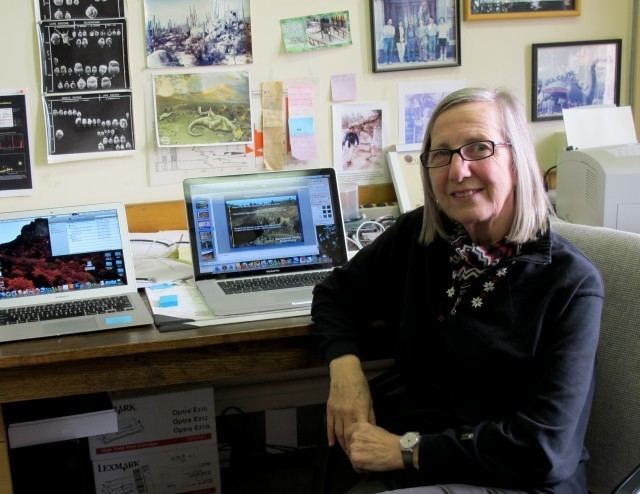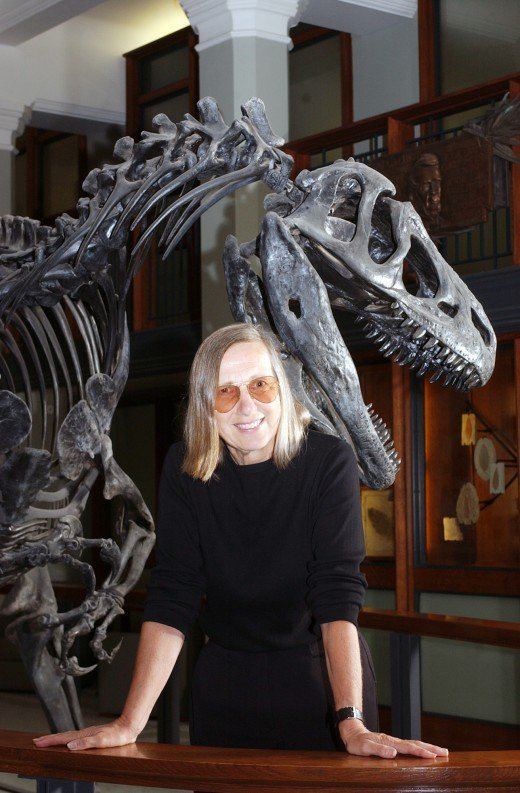Name Gerta Keller | ||
 | ||
Gerta keller on deccan volcanism chicxulub impact and the ktb mass extinction
Gerta Keller (born 7 March 1945) is a paleontologist who contests the Alvarez hypothesis that the Chicxulub caused the mass extinction 66 million years ago. Keller maintains that this impact predates the mass extinction and that Deccan volcanism and its environmental consequences were the most likely major cause possibly exacerbated by the impact.
Contents
- Gerta keller on deccan volcanism chicxulub impact and the ktb mass extinction
- Extinction events gerta keller co editor gsa special paper 505
- Early life and education
- Paleontology
- Selected publications
- References

Extinction events gerta keller co editor gsa special paper 505
Early life and education

Keller was raised in Switzerland on a dairy farm, the sixth of 12 children. She grew up in poverty. In the one-room schoolhouse where she was educated, boys were given training in math and science while girls were taught cooking and cleaning, the skills they would need to be proper housewives. Her hunger for knowledge led her to read the textbooks assigned to her elder siblings, and she would prepare summaries of the material for her brothers and sisters.
She attended a vocational school starting at age 14 and learned sewing. There she organized a protest against rules that required female students to wear skirts, as she rode her bicycle three miles each way to school and wanted to be able to protect herself from the cold. The female students won the right to wear pants from then on.

After receiving her vocational certificate at age 17, she went to work for Pierre Cardin, where she was paid the equivalent of 25 cents per hour to sew luxury gowns that would sell for as much as $1,000 for which she was paid $12. She traveled around the world, learning English and working in England, followed by travel to North Africa, Spain and Australia. She survived being shot in a bank robbery in Australia in 1965, despite awakening in a hospital intensive care unit to find a priest pressing her to confess, telling her that she was going to die.

After ending up in San Francisco in 1968, Keller was "freaked out" by the shots and tear gas launched at student protests; she chose to focus on education and took a high school equivalency exam. She received her undergraduate degree at San Francisco State University and received a doctorate in geology and paleontology from Stanford University in 1978.
Paleontology

After earning her doctorate, Keller worked for the United States Geological Survey and Stanford. She came to Princeton University in 1984 and after a few years started studying the Cretaceous–Paleogene boundary (K–T boundary), the geological signature of the Cretaceous–Paleogene extinction event. Keller's research has led her to conclude that the Chicxulub impact predates the extinction event and therefore could not have been the cause. "I'm sure the day after, they had a headache," Keller states, adding however that "we vastly overestimate the damage to the environment and to life that this Chicxulub impact had".
The main evidence for the Alvarez hypothesis that a single impact resulted in the Cretaceous–Paleogene extinction event that killed the dinosaurs has come from the presence around the world of shocked quartz granules, glass spherules and tektites embedded in a layer of clay with extremely high levels of iridium, all signs of an asteroid impact. Keller's research found layers where the glass spherules and the iridium clay are found separated by as much as 8 feet (2.4 m) of sandstone and other material. Supporters of the Alvarez theory believe that the sandstone is the result of a massive tsunami that sandwiched the sand from the massive waves triggered by the impact between the shocked quartz layer and the iridium clay. Keller's analysis of the strata between the spherules and iridium clay contain signs that the material was laid down over as much as 300,000 years based on signs of plankton, worms and weathering found on the intervening material.
